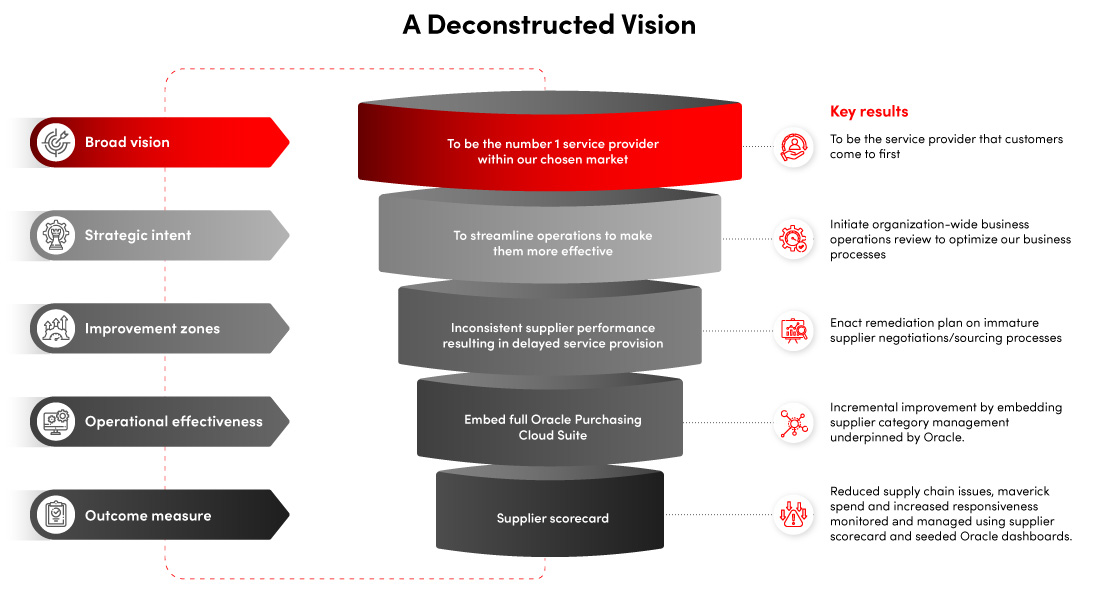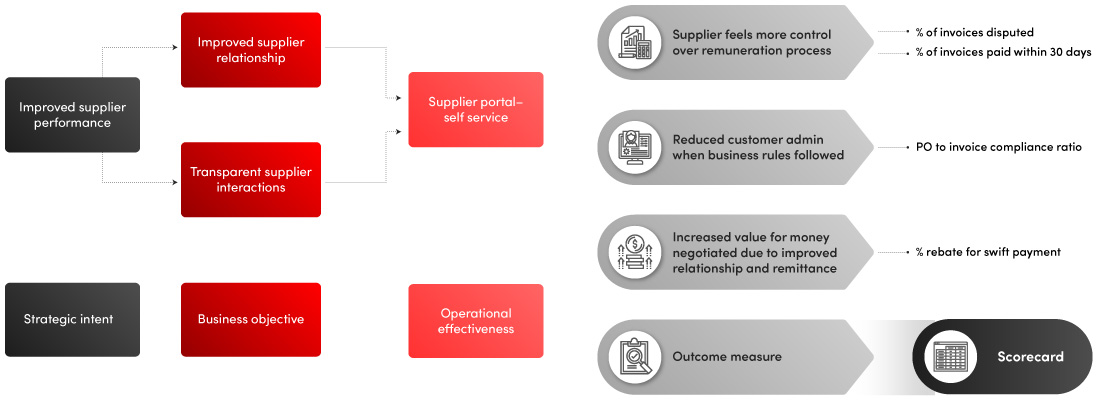Accelerate time to value with Inoapps & Oracle Cloud Apps: Part Two

Start with the end in mind
In part one of this series, we looked at the key elements of a successful Oracle Cloud Applications modernization journey. In this blog, I'll explore some practical tools and approaches to help you identify project outcomes and measure success.
Henry Kissinger said “If you don’t know where you’re going, then every road will lead you nowhere.” Conversely, when you know where you’re going, many roads can take you there.
In life and in business, it’s important to have an end goal to work towards, as this provides a framework for improvement and a way to measure progress.
There are many ways to achieve that end goal and you might adopt different approaches to get there based on resources, budget, strategy, priorities, and challenges.
When working towards longer term objectives, you need flexibility built into your approach, and even to some extent your end state. You need to be able to pivot in response to external factors e.g. Political, Economic, Social, Technological, Legal and Environmental (PESTLE).
The same is true as you embark on your journey to Oracle Cloud Applications, which is where our flexible implementation approach, Inoapps Evolve, can help.
Structured around your evolving Oracle Applications roadmap, it allows you to signpost a direction of travel that underpins your business strategy, while taking advantage of new opportunities that arise from alignment with the Oracle roadmap and updates.
The real magic happens when your roadmap and the Oracle roadmap align—by e.g. meeting a new statutory requirement or leveraging cloud to reduce your carbon footprint.
OK but how do I start with the end in mind?
The key here is to know where you’re heading but with a view on the visible horizon and an agile approach to allow course correction as the picture develops. This takes Strategic Imagination, an understanding of how the world is evolving, and the ability to visualize a future for your customers, people and business operations.
There are many tools and techniques that can help, e.g.
- Vision. Before you embark on any initiative you need to understand your vision for the future. You can summarize this in a single succinct statement that articulates the purpose of your initiative and how you can tell you’ve achieved it. Once you’ve established your vision, you can then deconstruct it to inform your roadmap, like this:
- Objectives and Key Results (OKR). Understanding what you want to achieve and how you’ll measure success is key to planning your journey. You can set OKRs that measure and communicate aspirational goals, e.g.
- Objective: Improve employee experience and retention
- Key Result: Define employee experience model and implement Oracle HCM, Talent and Performance modules
- Outcome Maps. You can use these to link your strategic intent (where you want to get to) to areas for improvement to show how you’ll achieve operational effectiveness and measure success. Here’s an example of how implementing Oracle’s Supplier Portal in an Inoapps Evolve sprint would deliver measurable outcomes:
- Oracle Operating Model. Oracle has a framework for business operations within Oracle Cloud called Oracle Business Flows. These are a set of standard best practice business processes that you can adopt to help you towards your strategic outcomes and target Oracle Operating Model.
How does Inoapps Evolve achieve agility while keeping the end in mind?
Inoapps Evolve is designed to transition organizations to Oracle Cloud Applications both efficiently and effectively.
The initial project provides an agreed minimal viable product (MVP) that lets you transition your core business operations to Oracle Cloud and achieve baseline associated benefits.
This gives you a stable foundation for continuous improvement as you take on additional modules or features, along with an operational baseline to measure ROI.
You achieve this via your roadmap for continuous improvement, which aligns to your organization’s strategic and operational objectives and is set out at the beginning of the project. By chunking your roadmap into manageable packages, you can easily review and update it in response to external and internal environmental factors like:
- Tax rates changing
- Economic environment demanding reduction in operational costs
- Employee retention becoming a focus
- New Oracle features providing efficiency opportunities
- New legislation demanding process adaptation
- Focus on reducing your carbon footprint
So how do I measure my return on investment?
You know how much the project costs but how do you work out the benefits and link them to specific Inoapps Evolve increments?
Start with your Outcome Maps for a high-level indication of the % improvements you’re going to generate. These can then be quantified by benefit classification:
- Cashable: benefits that will easily generate a monetary value e.g. reduced costs or increased income
- Non-Cashable: less tangible but with some extra thought can be transferred into a monetary value e.g. efficiency gains allowing teams to do higher value work, or improved employee experience resulting in more productivity
Now you can start to group your outcomes together into Inoapps Evolve phases. Start with your core MVP and then map out future phases based on your Inoapps Evolve roadmap and business strategy. You can now create your projected ROI for each phase from MVP onwards.
Making benefits realization a reality
While some benefits are immediately realizable e.g. decommissioning servers, others are more subjective/complex e.g. to reduce employee attrition, driven by factors like a better working environment, better tools, or increased opportunities for personal growth.
The more subjective or complex a benefit is, the more it relies on people to make benefits realization (and subsequently the ROI) a reality. In our next blog, we will look at the role people play in a successful Cloud Applications project.


